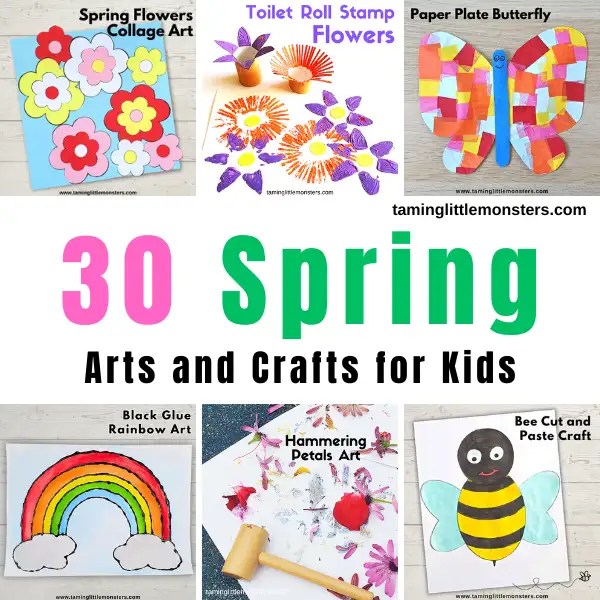Learn how water travels up a plant’s stem and into the petals of the flower with this fun science experiment. Color Changing Flowers is a fun and easy way to show preschool and kindergartners how plants use capillary action to move water molecules from the ground upwards.
Kids of all ages will love watching these flower petals change into new vibrant colors.
Make entertaining the kids easy with the Spring Activity Pack.
For only $10 you’ll get 90+ pages of hands-on activities and craft templates. They’re perfect for teaching math, literacy, fine motor skills and more to preschool and kindergarten aged kids.
Take a closer look inside, or buy it here.

Disclosure: Some of the links provided in this blog are affiliate links. I will be paid a commission if you use this link to make a purchase.
Science Activities for Spring
If you’re always looking for a new fun experiment to do with your toddlers and preschoolers, then try some of these other Spring science activities for kids.
- Butterfly Life Cycle Activity
- Walking Water Experiment
- Growing Beans in the Classroom
- Life Cycle of a Plant
For more fun ideas, take a look at these 20 Spring STEM Activities.
Materials needed
- White flowers
- Food coloring
- Water
- Glasses or a test tube, 1 for each color
How to make Color Changing Flowers

This experiment is very easy to set up. It takes all of 5 minutes and kids as young as three can do all of the steps themselves.
Step 1: Take a glass, one for each color, and fill it with water and food coloring.
I added a lot of food coloring into my water because I really wanted the colors in the petals to pop. I’ve seen other people who have done this experiment with about 15 drops of food coloring, however it took a few days to reach the same level of color saturation as mine did overnight.

Step 2: Trim the ends of your flower stems and place them in the water.
If one of your flowers doesn’t seem to be changing color, try trimming the bottom of the stem again and putting it back into the water.
Step 3: Wait for the flowers to soak up the colored water. Although I started seeing the colors change within 30 minutes, the flowers were at their best the next morning.
FAQ’s
What flowers change color?
You can try this simple science experiment with a variety of different flowers. However, flowers with white petals (such as white roses) have the best results because the food coloring isn’t competing with a pre-existing color.
How does the color changing flower experiment work?
Flowers absorb water through their roots (or the stem in this experiment) and draw it up through the stem and into the petals using capillary action. In this science activity, the food coloring gets transported with the water up the stem and into the petals. However, while the water evaporates out of the petals, the food coloring does not. So it stays behind and accumulates within the flower petals.
Capillary action is the movement of a liquid through or along another material against an opposing force, such as gravity.
Study.com
This experiment creates a fantastic visual result for how plants drink water. After all, we’re so used to water going down. For example, the rain falls down, and bathwater goes down the drain. However, flowers make water go up, and up against gravity too.
Younger kids won’t appreciate the concept of capillary action, but they’ll still love watching their flowers change color and get excited by a bit of science at the same time.
How long does it take for a flower to change color with food coloring?
It usually takes overnight for the flowers to start changing, with the color becoming stronger over the next few days. However it does depend on the amount of food coloring you use. If you want to see results quickly, you can add in ¼ a bottle. Then you will start seeing the flowers change color in about 30 minutes.
How to make Rainbow Flowers
This is a fun alternative to the Color Changing flowers experiment. In this variation cut each stem lengthwise with a sharp knife, either into 2 or 4 sections. Then place the end of each section in a different glass of colored water. The flower will soak up each of the 4 colors and they will appear in different parts of the flower head. The colors don’t mix, instead they show up side by side, a bit like a rainbow.
Are you going to try this Color Changing Flower Experiment with your kids?
Don’t forget to pin the idea for later.

Over 90+ pages of Spring themed play based learning activities and craft templates. Perfect for preschool and kindergarten.



